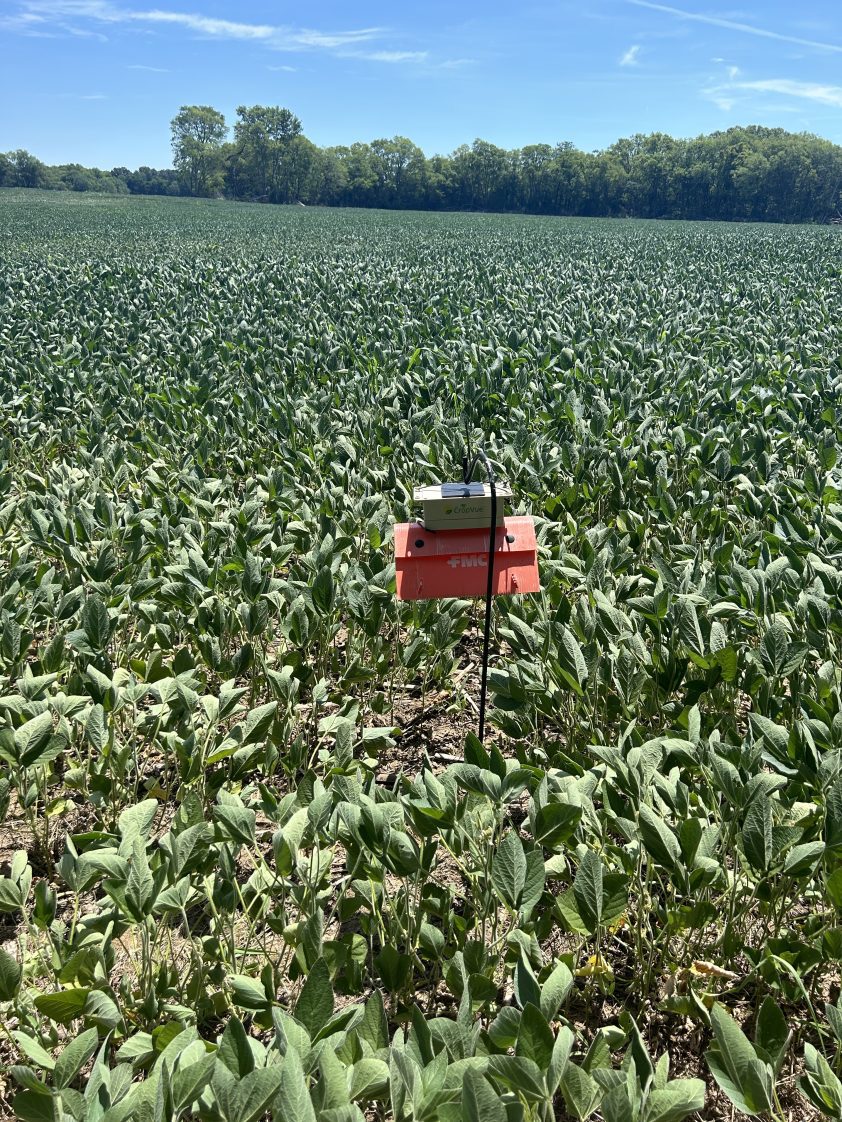College and Major: Auburn University College of Agriculture, Agricultural Science
Hometown: Rogersville, Alabama
Career Goals: After graduation, I would like to own some land for agricultural purposes.
Hobby or Fun Fact: I like to go deer hunting.
Follow Daniel’s Internship Journey
July 3
The past few weeks have been both fun and informative. I have been learning about the use of drones in agriculture, cotton, and soybean pests, soil nutrient stratification, and chemical damage to soybeans. I have been staying busy with farm visits, staff meetings, and insect traps.
Cotton bollworm traps and soybean looper traps have been put out to get a good idea of the pest pressure in the areas of the traps. Cotton bollworm trap sticky pads and pheromones need to be replaced every two weeks, while soybean looper traps need to be replaced every four weeks.
The number of insects on the sticky pads can be viewed via the Arc farm intelligence application. While this is a good way to count the number of insects present, traps have been known to fall off their posts, so checking on them regularly is a good way to make sure they are effectively catching insects.
I look forward to the upcoming plans with my mentors, Ali Gotcher and Cade Grace. In the next few weeks, I plan to check in on the lambs for the 4-H lamb show project, visit the soybean and corn trial plots, continue to collect data with the insect traps, and help with delivery of bulls for North Alabama Bull Evaluation Consignment Sale.


June 5
During the last week in May, I got to help with a soybean trial plot. I picked up the seed that would be used for the trial and delivered it to where it would be planted. The next day, my mentor, Cade Grace, fertilized the field, and later we got the seed in the ground. Each variety of soybean was planted in a strategic spot in the field so that we could easily compare the performance of each.
Pictured below are the many soybean varieties that were used in the trial. There are seeds from four separate companies, with a total of eleven different varieties. A plot plan was developed in order to remember and keep track of the placement of each seed variety. Each variety was planted in the plot twice, generally not right beside each other. This planting technique is to have soil nutrient diversity throughout the plot.
It has been exciting being able to participate in this experiment so far. It is informative and interesting to see the steps and processes of real experiments such as this one. The information we gather will be important for both current and future soybean producers. I look forward to seeing the results of this plot trial.





